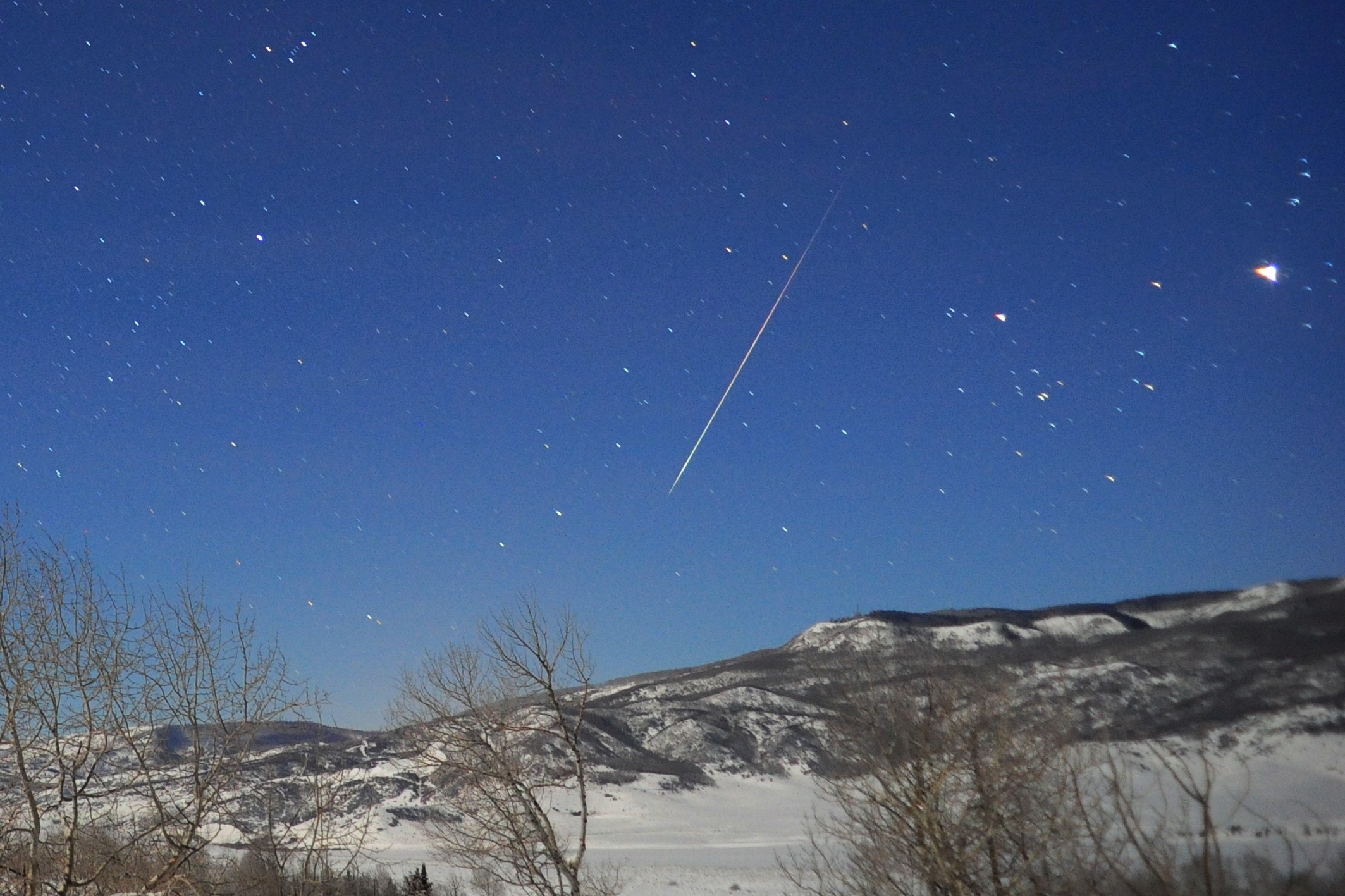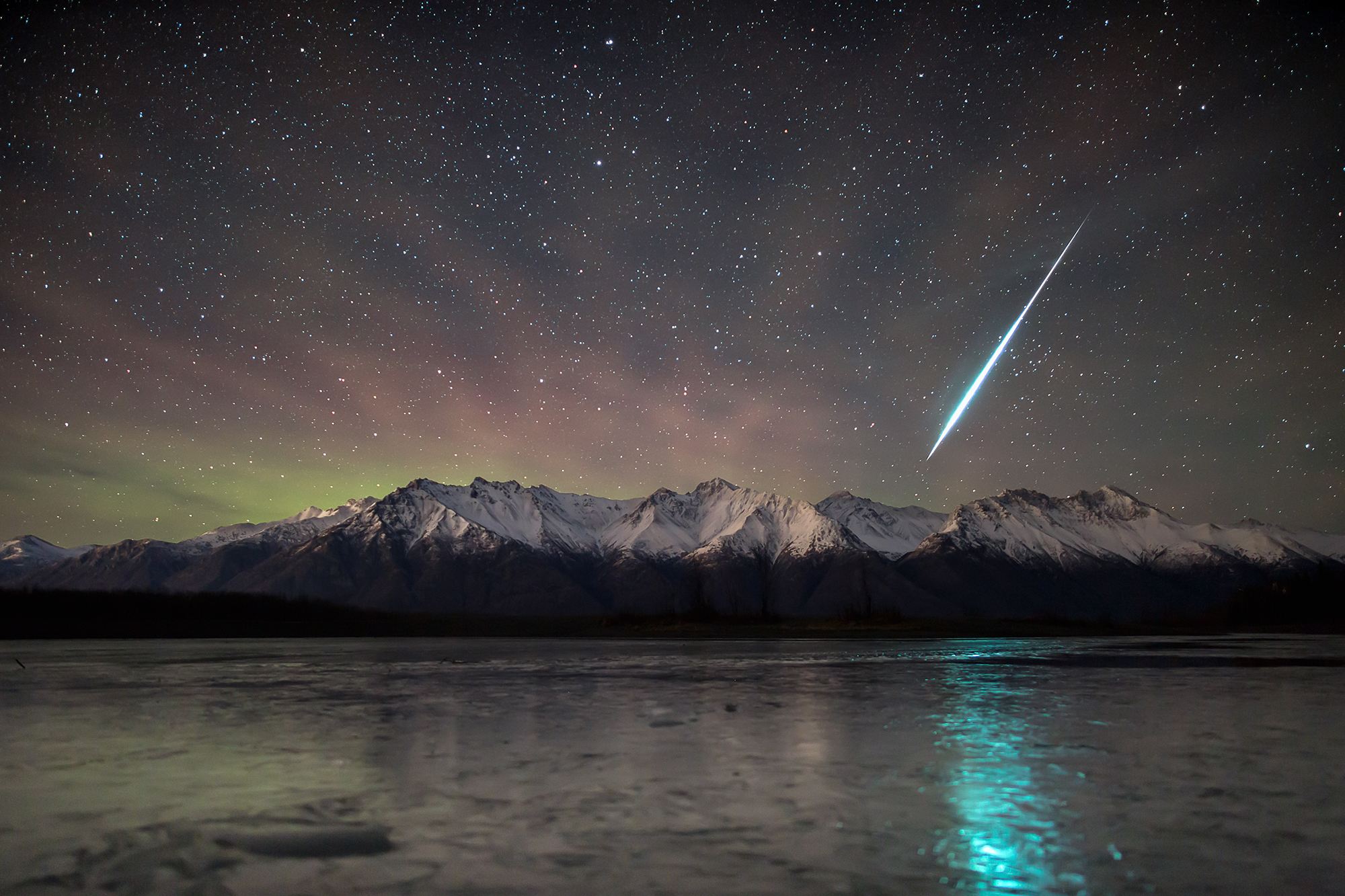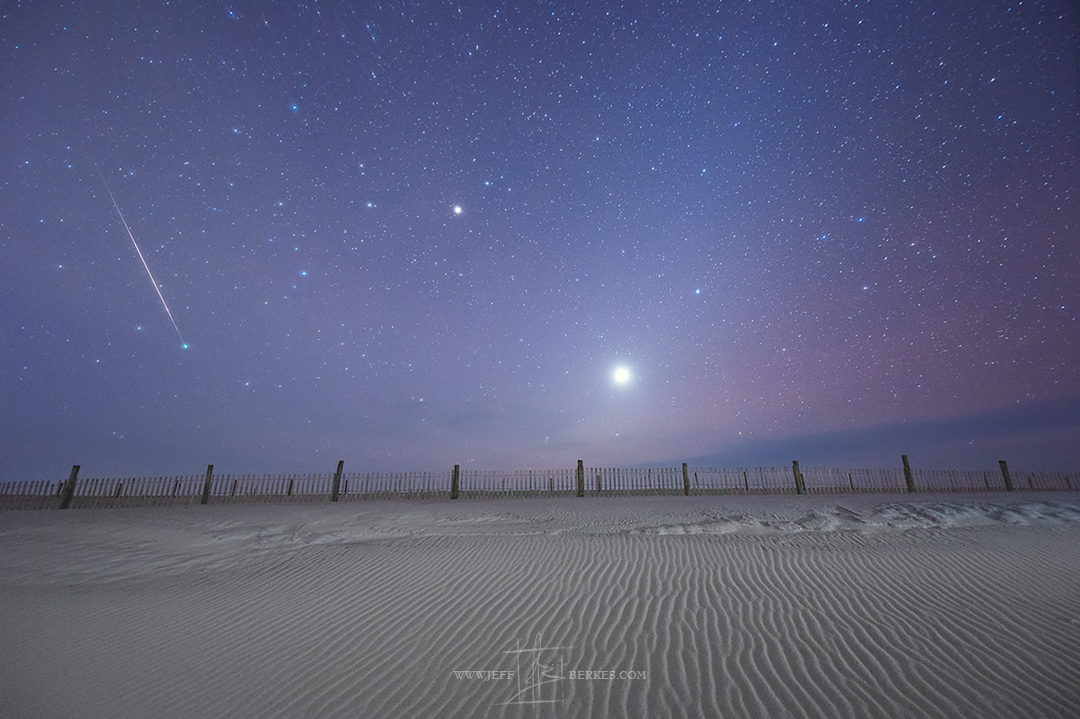
So far, 2019 has been a disaster if you are an enthusiastic watcher of "shooting stars."
That's because many of the principal meteor showers have been severely hindered by bright moonlight. Generally speaking, if the moon's phase lies somewhere between first quarter and full or between full phase and last quarter, and is above the horizon when a meteor shower is due to occur, the light of the moon will no doubt outshine all but the brightest streaks.
This year, the April Lyrids, August Perseids, October Orionids, and November Taurids and Leonids have all run up against interference from the moon.
Related: Best Night Sky Events of December 2019 (Stargazing Maps)
And now, to add insult to injury, the final and worst scenario occurs this weekend, when the very best and the most reliable of the annual meteor displays will fall just two days after a full moon. The Geminid meteors are scheduled to reach their peak during the overnight hours of Friday (Dec. 13), into the predawn hours of Saturday (Dec. 14).
The moon will also be in the sky all through these hours. It will be 95% illuminated, shining at a dazzling magnitude of -12, more than 600 times brighter than Venus, appearing like a spotlight and shining smack-dab in the middle of the constellation Gemini, from which the meteors appear to radiate (hence their name, "Geminids"). The brilliant moonlight will likely hide all but the brightest meteors.
Bummer!
Get the Space.com Newsletter
Breaking space news, the latest updates on rocket launches, skywatching events and more!

Graceful, colorful and spectacular — maybe
The Geminids are often described as "bright and intensely colored," and are typically plentiful, with as many as 120 meteors per hour for a single observer in the absence of moonlight, something that is all but out of reach this year.
And we can offer a solution to the moon problem — call it "damage control" — for the 2019 Geminids.
On Saturday evening, the moon will not rise until shortly after 7 p.m. local time. The radiant of the Geminid meteors (situated near the bright star Castor) will come above the northeast horizon just as evening twilight is ending, around 6 p.m.
That short window of dark skies — from about 6 to 7 p.m. — will probably offer you the best chance this year of seeing a few bright Geminids flitting across the sky. Early Saturday evening, there is a fair chance of catching sight of some "Earth-grazing" meteors: long, bright shooting stars that streak overhead from a point near or just below the horizon.
Such meteors are so distinctive because they follow very long paths nearly parallel to our atmosphere. In this year's Geminids, look for meteors racing almost straight up from the northeast horizon to a point ending overhead.

2020 will be a gem for the Geminids
As bad as the viewing circumstances are for this year's Geminids, next year will be quite a different story. The shower's peak is expected during the evening hours of Dec. 14. Typically, the peak should last for about 10 hours centered on 9 p.m. EST.
That means that skywatchers in eastern North America will be in excellent position to view the Geminids at their prospective 120 meteors per hour maximum when Gemini is situated overhead at 2 a.m. And if you're wondering about the moon, it will be new, with no moonlight in the sky. In short, perfect viewing conditions!
I, for one, can hardly wait.
- The Top 10 Skywatching Events to Look for in 2020
- The Brightest Visible Planets in December's Night Sky
- December Full Moon 2019: The 'Cold Moon' Joins Venus and Saturn
Joe Rao serves as an instructor and guest lecturer at New York's Hayden Planetarium. He writes about astronomy for Natural History magazine, the Farmers' Almanac and other publications. Follow us on Twitter @Spacedotcom and on Facebook.

Join our Space Forums to keep talking space on the latest missions, night sky and more! And if you have a news tip, correction or comment, let us know at: community@space.com.

Joe Rao is Space.com's skywatching columnist, as well as a veteran meteorologist and eclipse chaser who also serves as an instructor and guest lecturer at New York's Hayden Planetarium. He writes about astronomy for Natural History magazine, Sky & Telescope and other publications. Joe is an 8-time Emmy-nominated meteorologist who served the Putnam Valley region of New York for over 21 years. You can find him on Twitter and YouTube tracking lunar and solar eclipses, meteor showers and more. To find out Joe's latest project, visit him on Twitter.
-
rod ReplyThe Exoplanets Channel said:Can't wait to see it !
Please post a note if you do. Where I live, weather conditions are clouds and light rain through much of the weekend and today. Past years, I enjoyed some good views of Geminids. My stargazing log shows viewing Geminids in 2018 back to 2004. -
rod ReplySamuofh said:Can I see it from Houston
If this is Houston Texas - yes. The Geminid meteor radiant is already well up at Houston. Altitude 30 degrees and azimuth near 67 degrees or ENE sky. The Geminid meteor radiant transits at Houston near 0220 local time. If you have clear skies, you could catch some Geminids tonight and early tomorrow morning. I find meteor shower observations best around 0100-0500 local time, before sunrise. -
rod ReplySegblythe44 said:When will they be best visible in Austin, TX?
Similar to Houston TX times but viewing from city lights, faint Geminids likely not visible, e.g. 4th magnitude meteors. -
rod For those following this article on the Geminids, Rod did see at least 5 late Friday night! Here is a note on my observations. I was out from 2100-2330 EST observing. Waning gibbous Moon in Cancer this evening. I went out with my 10\00d750 binoculars and tried to observe some Geminids tonight and binocular views of the Moon, and M42 in Orion. I did enjoy some views of the Moon and M42 using the binoculars. The Geminids radiant was up. Lovely evening with altocumulus clouds illuminated by waning gibbous moonlight. Orion visible, Sirius, the Pleiades in Taurus, Capella in Auriga, Cassiopeia. There were large breaks in the clouds. I did observe two Geminids flash by moving towards Cassiopeia, away from the radiant. They were both about as bright as Capella in Auriga. Starry Night reports the Geminids travel about 35 km/s, so does Stellarium 0.19.2. My flip cell phone time check showed 2140 EST and 2142 EST. Later near 2305 EST, I observed a bright meteor flash by Orion heading south. The meteor disappeared behind altocumulus clouds in the south sky but I estimate it was about as bright as Sirius in Canis Major. The altocumulus clouds and cirrus clouds – more moved in so I decided to end the observation run for Geminids this evening near 2330 EST. There were two fainter Geminids I saw move through Auriga but they were fainter, near mv +4.0 or fainter. The waning gibbous Moon with altocumulus clouds and cirrus – caused problems viewing tonight but the moonlight on the clouds provided an ethereal sky. Temperature not bad tonight, 5C while viewing.Reply -
rod Oops, that is observing late Saturday on the 14th of December. The peak was expected early on the 14th after midnight. I viewed on the 14th from 9:00 PM until 11:30 PM EST and was able to view some Geminids :).Reply









